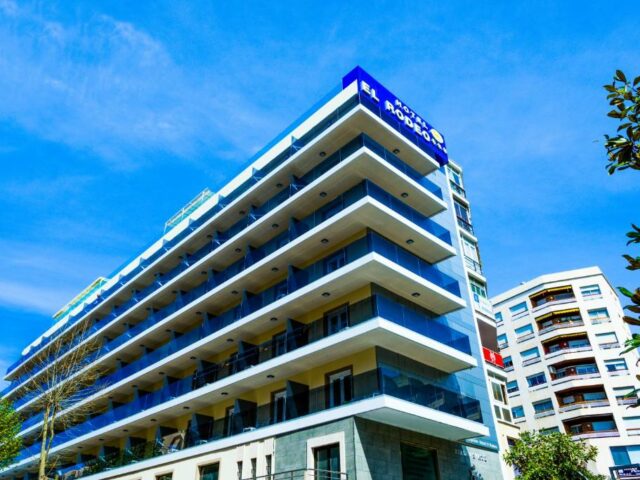Marbella is a beautiful city located on the southern coast of Spain. Known for its luxurious resorts, stunning beaches, and vibrant nightlife, it’s a popular destination for travelers from all over the world. But Marbella’s history is just as rich and fascinating as its present. From ancient civilizations to modern times, the city has a storied past that has left its mark on the region.
The earliest human settlements in the Marbella area date back to the Paleolithic period, around 16,000 years ago. Evidence of these settlements can still be found in the region, including the Cueva de la Pileta, a cave with prehistoric paintings that are over 20,000 years old.
In the centuries that followed, Marbella was inhabited by several different civilizations. The Phoenicians, who were known for their seafaring and trade, established a settlement in the area around the 7th century BCE. The Greeks also settled in the region, and their influence can still be seen in the names of some of the city’s streets and neighborhoods.
The Romans, who conquered the Iberian Peninsula in the 3rd century BCE, also left their mark on Marbella. The city was known as Salduba during this time, and it was an important commercial center for the Romans. They built several structures in the area, including a fish salting factory and a road that connected Marbella to other Roman settlements in the region.
In the 8th century CE, the Moors, who were of North African origin, conquered Spain and established a Muslim empire that lasted for over 700 years. Marbella was an important agricultural center during this time, and the Moors built several defensive structures in the region, including the Castle of Marbella.
In 1485, the Catholic Monarchs, Ferdinand and Isabella, conquered Marbella as part of their campaign to reconquer Spain from the Moors. During this time, the city experienced a period of decline and was mostly abandoned. It wasn’t until the 19th century that Marbella began to see significant growth and development.
n the late 19th and early 20th centuries, Marbella began to attract wealthy Europeans and aristocrats, who were drawn to its sunny weather and beautiful beaches. The city became a popular destination for the rich and famous, and several grand villas and mansions were constructed during this time. The Marbella Club, a luxury hotel that was founded in 1954 by Prince Alfonso de Hohenlohe-Langenburg, became a favorite among celebrities and aristocrats, including the likes of Brigitte Bardot and the Duke and Duchess of Windsor.
In the 1960s, Marbella began to experience a tourism boom, and the city’s population grew rapidly. The development of modern infrastructure, including the construction of the Marbella-Puerto Banus highway, made it easier for tourists to reach the city. The opening of Puerto Banus, a luxury marina and shopping complex, in 1970, further cemented Marbella’s reputation as a playground for the rich and famous.
Today, Marbella continues to attract tourists from all over the world. Its beautiful beaches, luxurious resorts, and vibrant nightlife make it a popular destination for those seeking a glamorous vacation. But Marbella’s rich history and culture also make it a fascinating destination for history buffs and culture enthusiasts. From the Roman ruins to the winding streets of the Old Town, there’s something for everyone in this beautiful city.
Themes:
- Surfing on the Costa Del Sol: Dive into the Thrilling World of Waves and AdventureWelcome to the exciting world of surfing on the Costa Del Sol! With its beautiful beaches, long waves, and perfect breaks, this location is perfect for surfers of all skill levels. Whether you’re looking to ride the waves, beaches or immerse yourself in the surfing culture, this sport is sure to provide adventure and thrills.… Read more: Surfing on the Costa Del Sol: Dive into the Thrilling World of Waves and Adventure
- From Tropical Oasis to Coastal Charms: Embark on a Journey through the Palms of Costa Del SolEmbark on a journey through the palm trees of Costa Del Sol and discover a world of tropical oasis turned coastal charms. From new species to date palms, flowering shrubs to fruit-bearing trees, there is a plethora of plants and trees to explore. Exploring the Palms of Costa Del Sol As you embark on a… Read more: From Tropical Oasis to Coastal Charms: Embark on a Journey through the Palms of Costa Del Sol
- Sylvester in Marbella: A Glamorous Celebration on the Costa del SolExperience a glamorous celebration on the Costa del Sol this New Year’s Eve with Sylvester in Marbella. From the best clubs to the top beaches, there’s no shortage of excitement in this golden paradise. Stay up-to-date with the latest news and events on i-Marbella, and don’t miss out on the art galleries and beach stalls.… Read more: Sylvester in Marbella: A Glamorous Celebration on the Costa del Sol
- Why Tarifa, Costa Del Sol Should be on Your Must-Visit ListWelcome to our blog post discussing why Tarifa, a charming town in Costa Del Sol, should definitely be on your must-visit list. With its breathtaking beaches, vibrant culture, and thrilling water sports, Tarifa offers a unique and unforgettable experience for travelers of all kinds. Whether you’re a nature lover, adventure seeker, or simply looking for… Read more: Why Tarifa, Costa Del Sol Should be on Your Must-Visit List
- Spain Holidays: The Pros and Cons of Staying in a Casa, Finca, Apartment, or VillaSpain is a popular holiday destination for many, with an array of accommodation options to choose from. With so many choices, it can be overwhelming to decide where to stay. In this blog post, we’ll explore the pros and cons of four popular types of accommodations in Spain – casa, finca, apartment, and villa –… Read more: Spain Holidays: The Pros and Cons of Staying in a Casa, Finca, Apartment, or Villa










